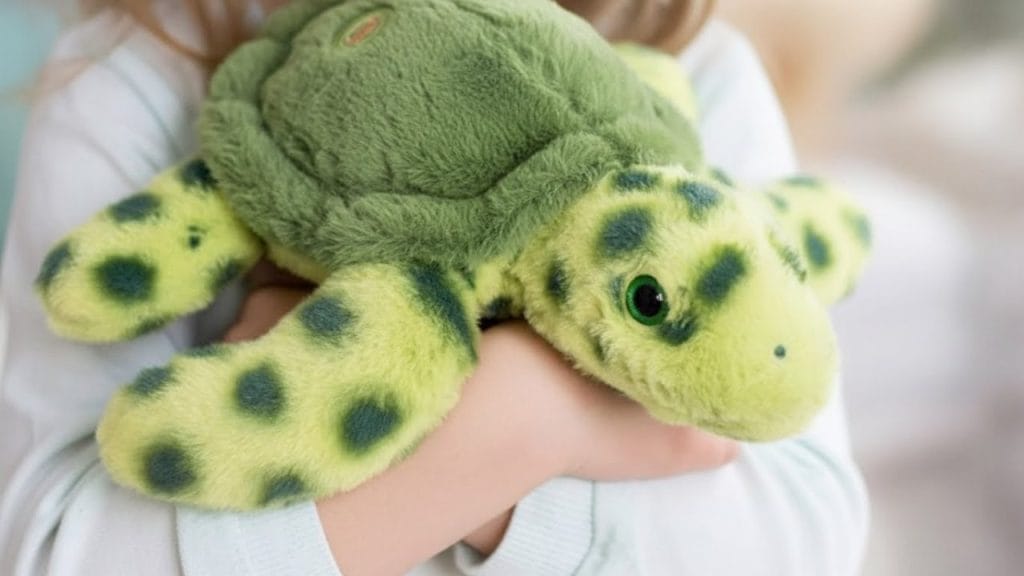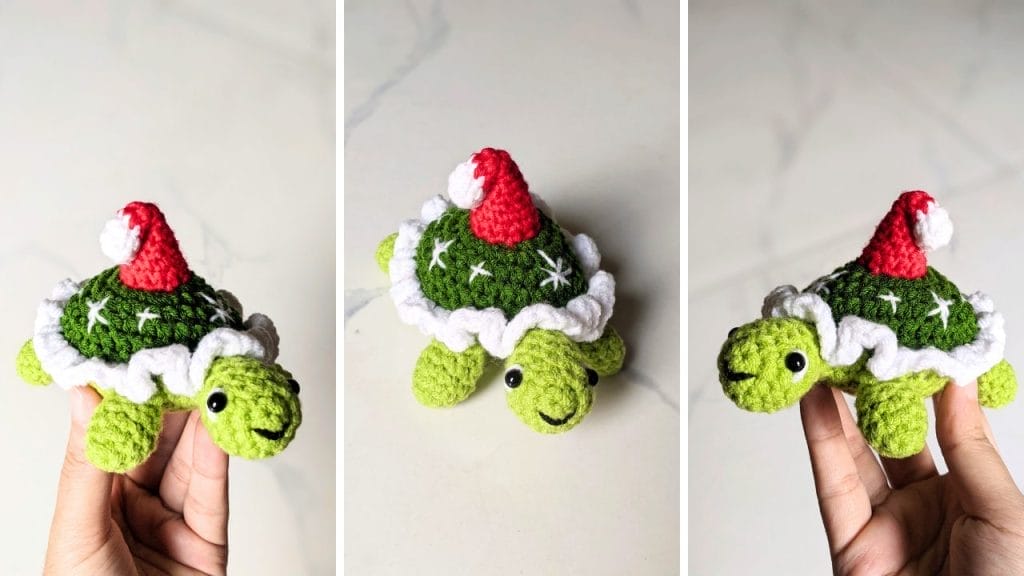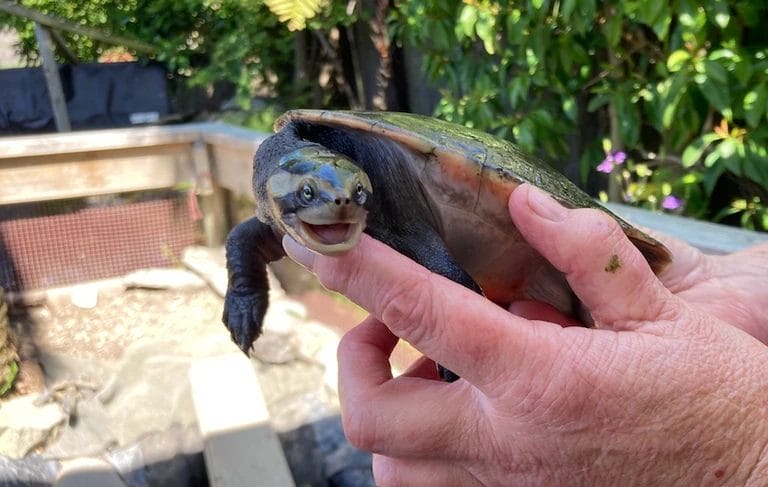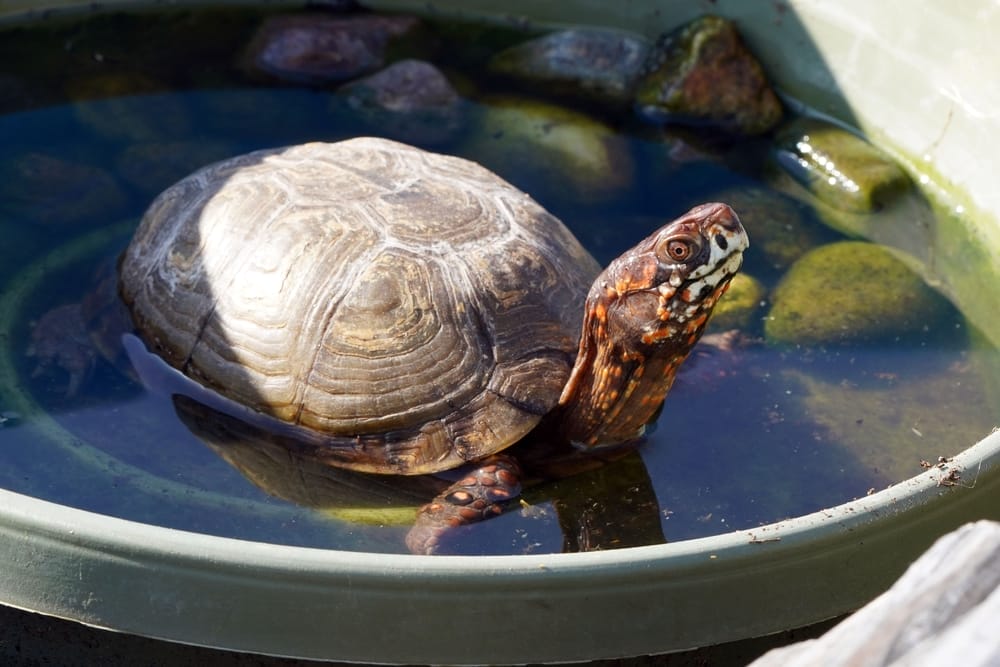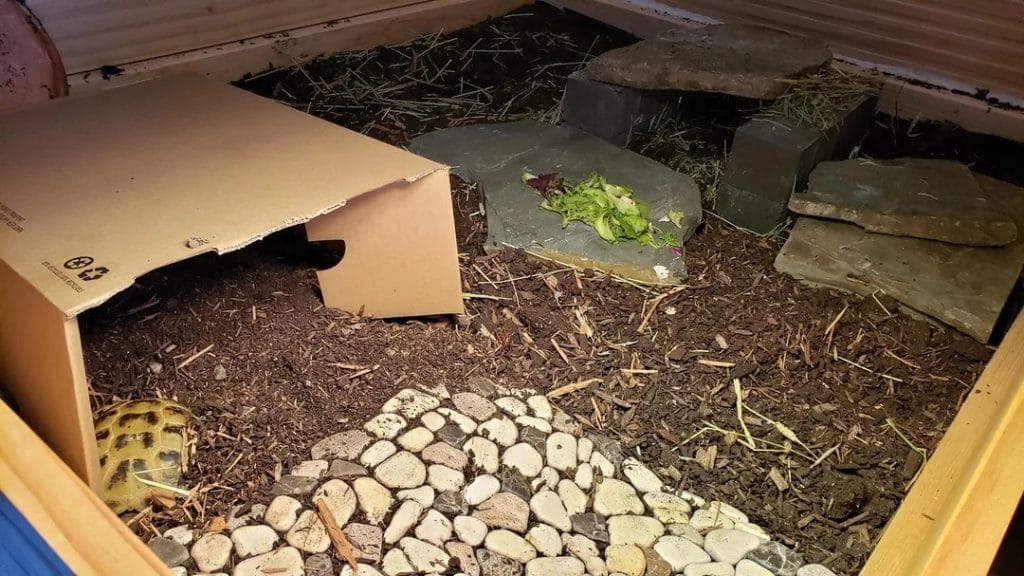How To Take Care Of Sulcata Tortoise In Winter?

This post was created with help from AI tools and carefully reviewed by a human (Muntaseer Rahman). For more on how we use AI on this site, check out our Editorial Policy.
Imagine being a creature built for the scorching heat of Africa, only to find yourself facing a winter chill.
That’s your sulcata tortoise when temperatures drop!
Since these guys don’t come with a built-in space heater, it’s up to us to keep them warm, healthy, and happy.
Let’s talk about the best ways to do just that—without turning your home into a desert.
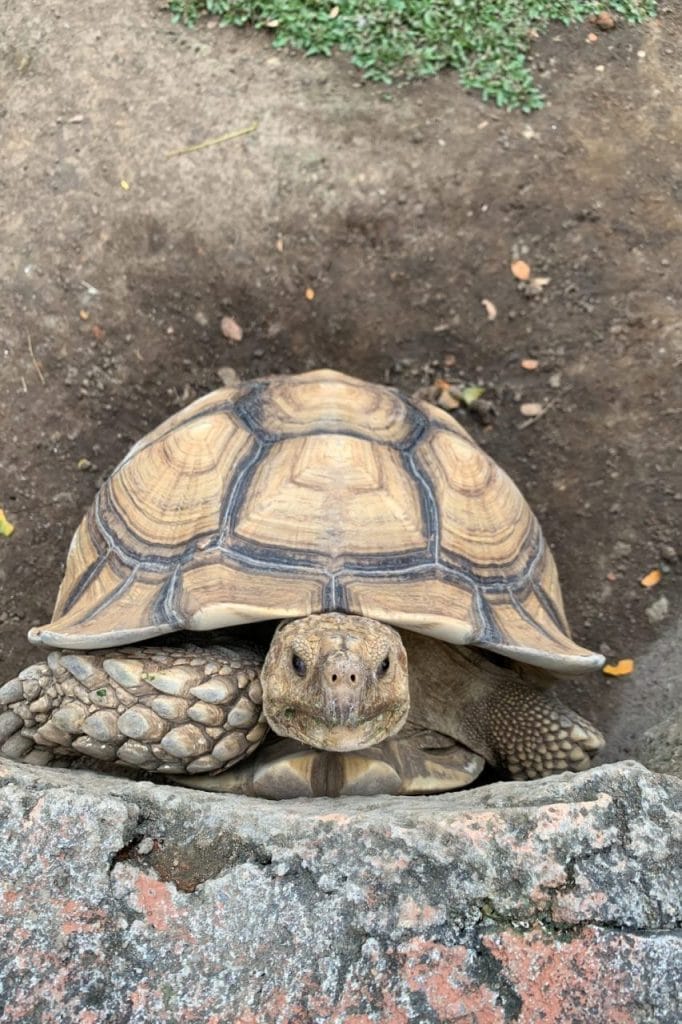
understanding the needs of sulcata tortoises
Sulcata tortoises are not built for cold weather. They come from the hot, dry regions of Africa, where winter barely exists. So when the temperature drops, they struggle.
I learned this the hard way with my own Sulcata, Tank. One chilly night, I thought he’d be fine in his outdoor enclosure. The next morning, he was sluggish and barely eating. Lesson learned—these tortoises need warmth, always.
Why Cold is a Problem
Cold temperatures can cause:
- Sluggish behavior
- Loss of appetite
- Respiratory infections
- Digestive issues
If it drops below 50°F (10°C), your Sulcata needs a warm indoor space.

Do Sulcatas Hibernate?
Nope! Unlike some other tortoises, Sulcatas do not hibernate. If they get too cold, they don’t go into a safe sleep—they get sick.
Ideal Temperature Range
| Area | Temperature |
|---|---|
| Basking Spot | 95-100°F (35-38°C) |
| Ambient Temp | 75-85°F (24-29°C) |
| Nighttime | No lower than 60°F (15°C) |
Keeping your Sulcata warm is the most important part of winter care. Get this right, and you’re already winning.
Get the Exact Equipment You Need
This article tells you WHAT temperatures to maintain. But which specific products actually achieve these temperatures reliably?
The difference between “heat lamp” and the RIGHT heat lamp:
- Wrong wattage = can’t maintain basking temps
- No thermostat = fire risk or temperature swings
- Cheap fixture = burns out, potential fire hazard
For specific product recommendations:
- Heating equipment with wattages and thermostats
- UVB bulbs that actually work
- Temperature monitoring tools
Complete Winter Equipment Checklist for Sulcata Tortoises
This article covers the “what” and “why” of winter Sulcata care. Here’s a complete checklist of the “exactly which products”:
Indoor Winter Setup Essentials:
| Equipment | What This Article Says | What You Specifically Need |
|---|---|---|
| Basking heat | “Heat lamp with strong reflector” | 100-150W basking bulb + dome fixture, OR radiant heat panel |
| Ambient heat | “Ceramic heat emitter” | 60-150W CHE based on room temp + enclosure size |
| Night heat | “Radiant heat panel” | Panel sized for enclosure (40W-80W typical for indoor) |
| UVB | “Mercury vapor bulb” or “Long tube UVB” | ReptiSun 10.0 T5 HO or Arcadia D3 12% + fixture |
| Temperature control | “Thermostat” | Thermostat rated for your wattage (BN-LINK or Inkbird) |
| Monitoring | “Digital thermometers” | Probe thermometer + infrared temp gun + hygrometer |
| Substrate | “Coconut coir, cypress mulch, soil” | 4-6 inches of coco coir/topsoil mix |
| Hide | “Half logs, plastic tubs, cardboard boxes” | Size appropriate for your tortoise (adults need LARGE) |
| Water dish | “Shallow water dish (heavy)” | Large ceramic or heavy plastic dish |
| Calcium | “Calcium supplement” | Rep-Cal calcium powder + cuttlebone |
Outdoor Winter Shelter Essentials:
| Equipment | What This Article Says | What You Specifically Need |
|---|---|---|
| Primary heat | “Radiant heat panels” | Panel sized for shelter volume + climate |
| Backup heat | “Ceramic heat emitters” | CHE + ceramic fixture rated for wattage |
| Floor warmth | “Pig blankets” | Pet-safe heating pad with thermostat |
| Insulation | “Straw or hay bedding” | Replace frequently (mold risk) |
| Temperature control | “Thermostat to prevent overheating” | Heavy-duty thermostat for outdoor use |
| Monitoring | “Thermometer inside the shelter” | Wireless thermometer (check from inside your house) |
Budget Reality for Winter Sulcata Care:
Indoor setup (if you don’t already have one):
- Enclosure (large): $100-300
- Heating (CHE + basking + thermostat): $80-150
- UVB (fixture + bulb): $60-120
- Substrate: $30-60
- Monitoring: $30-50
- Dishes & accessories: $30-50
- Total: $330-730
Outdoor heated shelter (additional):
- Radiant heat panel: $60-120
- Thermostat: $25-40
- Backup heating: $40-80
- Total: $125-240
Get Specific Product Recommendations:
This checklist tells you WHAT to get. For WHICH SPECIFIC PRODUCTS (brands, models, where to buy):
- Complete Tortoise Owner Essentials – Full equipment guide
- Heating Equipment – CHE, basking bulbs, radiant panels, thermostats
- UVB Lighting – Bulbs, fixtures, replacement schedule
- Temperature Monitoring – Thermometers, hygrometers, temp guns
- Substrate – Types, depths, where to buy bulk
- Food & Supplements – Calcium, diet specifics
- Shopping List by Priority – What to buy first
This Hilarious Turtle Book Might Know Your Pet Better Than You Do
Let’s be real—most turtle care guides feel like reading a textbook written by a sleep-deprived zookeeper.
This one’s not that.
Told from the snarky point of view of a grumpy, judgmental turtle, 21 Turtle Truths You’ll Never Read in a Care Guide is packed with sarcasm, sass, and surprisingly useful insights.
And hey—you don’t have to commit to the whole thing just yet.
Grab 2 free truths from the ebook and get a taste of what your turtle really thinks about your setup, your food choices, and that weird plastic palm tree.
It’s funny, it’s honest, and if you’ve ever owned a turtle who glares at you like you’re the problem—you’ll feel seen.
Indoor Sulcata Tortoise Setup for Winter
Bringing your Sulcata tortoise indoors for winter? Get ready for some rearranging. These guys are big, messy, and love to bulldoze through anything in their way.
I learned this the hard way when my tortoise, Tank, decided my bookshelf wasn’t a real obstacle. Spoiler: It was not.
The Right Enclosure
Sulcatas need space, even indoors. A small box won’t cut it.
Best options:
- Large tortoise table
- Kiddie pool
- DIY wooden enclosure
- A whole room (if you dare)
If your tortoise is still small, a large plastic tub works. But adults? You’ll need a serious setup.

Substrate (Flooring)
You want something that holds moisture but won’t mold.
Good choices:
- Coconut coir
- Cypress mulch
- Soil (without fertilizers)
Avoid sand—it’s messy and can cause impaction if eaten.
Coconut coir and cypress mulch are good choices, but how deep should it be? (Answer: 4-6 inches minimum for burrowing.)
What ratio?
Where to buy in bulk for a large Sulcata enclosure?
See our substrate guide for specifics.
Heating & Lighting
Sulcatas are sun lovers. Indoors, you need to replace that sunshine.
| Need | Ideal Range | Best Option |
|---|---|---|
| Basking Spot | 95-100°F | Heat lamp |
| Ambient Temp | 75-85°F | Ceramic heat emitter |
| Night Temp | 65°F+ | Radiant heat panel |
| UVB Light | 12-14 hrs/day | Mercury vapor bulb |
I once skipped the UVB light for a week, thinking it wasn’t a big deal. My tortoise got sluggish and stopped eating. Lesson learned.
This table shows what you need, but which specific products should you buy? A ‘heat lamp’ could be a $5 bulb that dies in a week or a quality fixture that lasts years.
A ‘mercury vapor bulb’ could be adequate or dangerously weak.
For exact product recommendations with wattages, brands, and setup instructions: Complete Heating Guide | UVB Lighting Guide
Hideout & Enrichment
Tortoises love a cozy hide. Give them a warm and a cool spot.
Good hide options:
- Half logs
- Plastic tubs with an entrance cut out
- Cardboard boxes (replace often)
Add some rocks or logs for enrichment. It keeps them from getting bored. Yes, tortoises get bored.
For a Sulcata—especially an adult—the hide needs to be LARGE. These tortoises can weigh 50-100+ pounds.
A small plastic tub works for hatchlings, but adults need substantial shelters. See hide recommendations by tortoise size.
Food & Water
Same diet, but watch hydration! The dry air indoors can dehydrate them fast.
Must-haves:
- Fresh hay and greens daily
- A shallow water dish (heavy, so they don’t flip it)
- Calcium supplement
- Weekly warm soaks (or more often for young ones)
I skipped a soak once, and my tortoise pouted in his hide all day. Dramatic? Yes. But also dehydrated.
Rep-Cal calcium powder without D3 (if they have adequate UVB) or with D3 (if UVB is questionable) makes a real difference.
The water dish needs to be heavy AND shallow—Sulcatas flip lightweight dishes constantly.
Specific product recommendations: Food & Supplements | Dishes

Cleaning & Maintenance
Sulcatas poop. A lot. Indoors, that means daily cleaning.
Daily:
- Spot-clean poop and uneaten food
- Refill water dish
Weekly:
- Change substrate if needed
- Wipe down enclosure
Trust me, a clean enclosure smells way better.
An indoor setup isn’t just for winter—it’s survival. Keep them warm, well-fed, and hydrated, and they’ll be just fine.
And maybe, just maybe, keep them away from bookshelves.
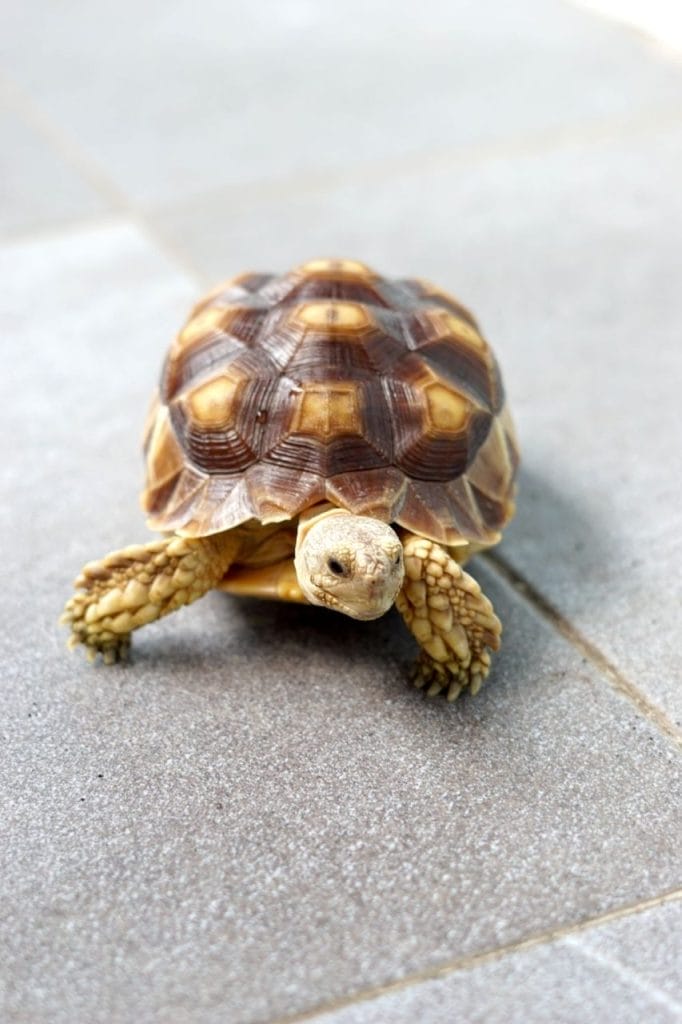
Perfect Wooden Tortoise House For Outdoor & Indoor!
This tortoise house isn’t cheap — but that’s because it’s not your average wooden box.
Built with durable wood, a waterproof liner, and smart design features like a sunbathing area and a hideout zone, the Aivituvin Large Wooden Habitat is made to last.
It’s perfect for tortoises or box turtles, indoors or out. And yep, it even has detachable legs.
If you’re serious about giving your tortoise a safe, comfy home without building one from scratch, this is the one.
👉 Grab the Aivituvin Tortoise House here — it’s currently $10 off.
Heating and Lighting for Sulcata Tortoises
Sulcata tortoises love the heat. They come from the dry, hot regions of Africa. Winter is not their friend! If you don’t keep them warm, they get sluggish, sick, or worse.
I learned this the hard way when my Sulcata, Tank, refused to eat one winter. Turns out, his enclosure was too cold. Lesson learned!
Basking Spot: Their Personal Sun
Sulcatas need a warm basking area, just like they get from the sun.
- Keep the basking spot 95-100°F (35-38°C)
- Use a heat lamp with a strong reflector
- Position it over a flat rock to absorb heat
Tank loves his basking spot. He sits there for hours, soaking in the warmth like a lazy beachgoer.
Ambient Temperature: No Chilly Nights
Even when they’re not basking, Sulcatas need warmth.
| Area | Temperature |
|---|---|
| Basking Spot | 95-100°F |
| Warm Side | 85°F |
| Cool Side | 75°F |
| Nighttime Min | 60-70°F |
At night, I use a ceramic heat emitter. No light, just warmth. It keeps Tank cozy without disturbing his sleep.
UVB Light: Fake Sun, Real Benefits
Sulcatas need UVB rays to process calcium. Without it, their shells get weak.
- 12-14 hours of UVB daily
- Long tube UVB bulbs are better than compact ones
- Replace bulbs every 6-12 months, even if they still glow
I made the mistake of using a weak UVB bulb once. Tank’s shell started looking bumpy. A stronger bulb fixed that fast.
Outdoor Heating: If They Stay Outside
If your Sulcata is in an outdoor enclosure, they need a heated shelter.
- Radiant heat panels work well
- Pig blankets (heated pads) keep their belly warm
- Straw or hay helps insulate, but clean it often
I tried using just hay once. Bad idea. Tank burrowed into it, but the temperature still dropped too low. Now, I always have a heat source.
Always monitor temperatures with digital thermometers. One in the basking spot, one in the hide, and one in the cool zone.
Keeping a Sulcata warm isn’t hard, but it takes consistency. Trust me, your tortoise will thank you—with a happy little shell wiggle.

Outdoor sulcata tortoise Care in Winter (If Necessary)
Some tortoise owners prefer keeping their Sulcatas outside year-round. If that’s you, make sure they have a warm and safe space. Cold can be dangerous for them, so planning ahead is key.
Build a Cozy Shelter
Your tortoise needs a heated, insulated space to survive the cold. A basic doghouse won’t cut it.
What to include in their shelter:
- Thick walls – Wood, concrete, or heavy-duty plastic works best
- A secure roof – Keeps in warmth and keeps out predators
- A door flap – Helps trap heat inside
- Straw or hay bedding – Keeps them warm but needs frequent replacing
I once tried using blankets. Big mistake. My Sulcata just bulldozed them into a corner and ignored them.
Keep It Warm
Tortoises don’t generate their own body heat. You have to provide warmth.
| Heat Source | Pros | Cons |
|---|---|---|
| Radiant heat panels | Safe, reliable | Can be pricey |
| Ceramic heat emitters | No light, just heat | Needs proper setup |
| Pig blankets (heated pads) | Keeps the floor warm | Must be placed safely |
| Heat lamps | Cheap and easy | Fire risk if not used properly |
I use a radiant heat panel in my tortoise’s shelter. It keeps the space warm without the fire risk of bulbs.
Monitor the Temperature
Cold snaps can come out of nowhere. Always keep a thermometer inside the shelter.
- Ideal shelter temp: 60°F (15°C) or higher
- Basking spot temp: 95°F (35°C)
- Use a thermostat to prevent overheating
I check my setup every night. One time, my heater failed, and my tortoise was not happy in the morning. Lesson learned—always have a backup!
Should You Bring Them Inside?
If temperatures drop below 50°F (10°C) and their shelter can’t stay warm, bring them inside. A cold tortoise is a sick tortoise.
Trust me, moving a 50+ pound tortoise is no joke. Plan ahead before winter hits!
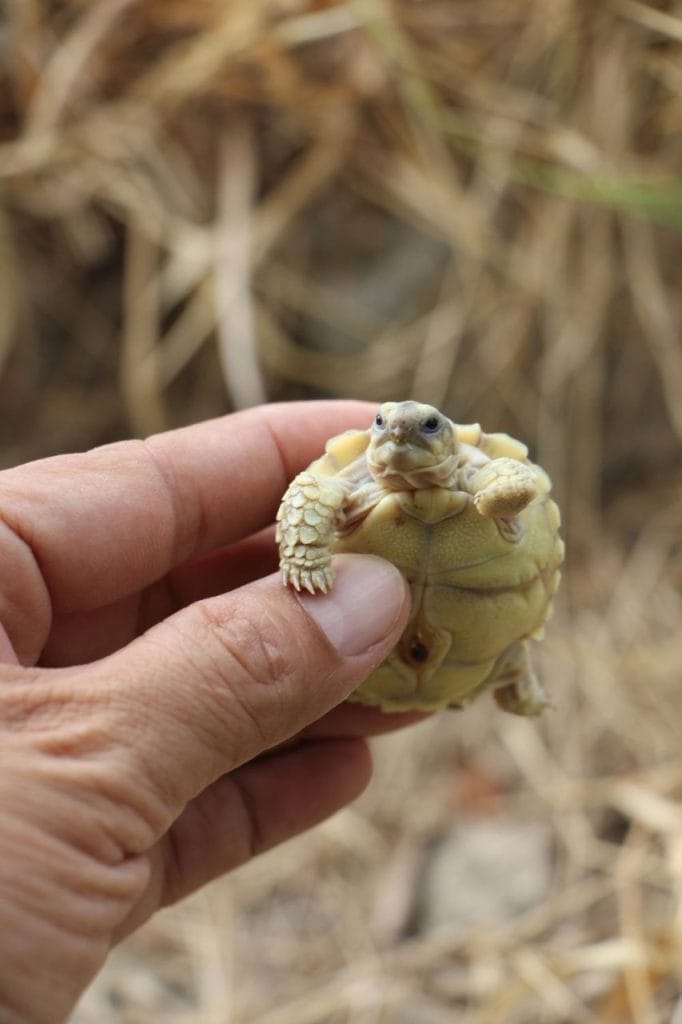
Proper Sulcata Tortoise Diet in Winter
Feeding a Sulcata in winter is all about keeping it natural and staying on track with their high-fiber diet. They don’t hibernate, so they still need plenty of food. But colder months mean less access to fresh grass, which is their main food source.
I remember my first winter with my Sulcata, and I panicked when the grass in my yard died. But after some research (and a bit of trial and error), I figured out a solid winter diet plan.
What to Feed in Winter
Since they can’t graze like they do in summer, you have to replace their natural food with healthy alternatives.
Best Winter Foods:
- Grass Hay – Timothy, orchard, or Bermuda hay is the best substitute for fresh grass.
- Leafy Greens – Collard greens, mustard greens, turnip greens, and dandelion greens.
- Cactus Pads (Opuntia) – Great source of fiber and hydration.
- Weeds (If Available) – Plantain leaves, mallow, or clover if you can find them.
Occasional Treats (Once a Week):
- Pumpkin or squash
- Carrot tops
- Hibiscus flowers and leaves
Foods to Avoid:
- Fruits (too much sugar)
- Lettuce (low nutrition)
- High-protein foods like dog or cat food (bad for their kidneys)
Calcium and Supplements
Sulcatas need calcium for strong shells. In winter, when they get less sunlight, this is even more important.
- Calcium Powder – Lightly sprinkle on food 2-3 times a week.
- Cuttlebone – Leave one in their enclosure for them to nibble on.
- Vitamin D3 Supplement – Only needed if they don’t get enough UVB light indoors.
Hydration Matters
Cold weather can make tortoises drink less, but they still need water.
- Always provide fresh water in a shallow dish.
- Soak them 3-4 times a week (especially young tortoises) to prevent dehydration.
- Adding cactus pads to their diet helps with hydration.
I learned this the hard way when my Sulcata got sluggish one winter. Turns out, he wasn’t drinking enough. After adding more soaks and cactus, he perked right up.
Simple Winter Feeding Schedule
| Time of Day | Food & Care |
|---|---|
| Morning | Fresh hay + a mix of leafy greens |
| Afternoon | Optional snack (cactus pad or hibiscus) |
| Evening | Quick soak (3-4x a week) + check water dish |
Winter feeding is easy once you get the hang of it. Keep their meals high in fiber, don’t overdo the treats, and make sure they stay hydrated. If you do that, your Sulcata will stay happy, healthy, and ready for spring!

Monitoring Sulcata Tortoise Health
Keeping an eye on your Sulcata’s health is super important. These guys won’t bark or meow when something’s wrong. They just… slow down.
I’ve learned the hard way that small issues can turn into big problems if you miss the signs. So, here’s what to watch for.
Signs of a Healthy Sulcata
A happy, healthy Sulcata will:
- Eat like a tiny, walking lawnmower
- Poop regularly (yes, you should check)
- Move around without looking sluggish
- Have clear, bright eyes
- Breathe without weird noises
If your tortoise is doing all this, you’re on the right track.
Red Flags to Watch For
If you notice any of these, something’s off:
| Symptom | Possible Issue | What to Do |
|---|---|---|
| Runny nose, wheezing | Respiratory infection | Check temps, see a vet |
| Sunken eyes, dry skin | Dehydration | Increase soaking & humidity |
| Soft shell, weak legs | Calcium deficiency | Add calcium & UVB light |
| Not eating, no energy | Could be many things | Monitor closely, check temps |
| Unusual poop (runny or none at all) | Diet issue or parasites | Adjust diet, see a vet if needed |
My Experience with a Sick Sulcata
One winter, my tortoise stopped eating. I freaked out. Turns out, his enclosure was too cold. A simple heat lamp fix, and he was back to munching in no time. Lesson learned—always check the temps first.
Weekly Health Check Routine
- Weigh Them: A sudden drop = bad news
- Look at Their Eyes & Nose: Should be clear, not runny
- Watch Them Walk: No dragging legs or wobbling
- Feel Their Shell: Hard = good, soft = not good
- Check Their Poop: Weird changes? Time to investigate
When to See a Vet
If you’re unsure, it’s always better to ask a reptile vet. Quick action can save your tortoise from serious problems.
A little extra attention goes a long way. Stay observant, and your Sulcata will thrive!

About Author
Muntaseer Rahman started keeping pet turtles back in 2013. He also owns the largest Turtle & Tortoise Facebook community in Bangladesh. These days he is mostly active on Facebook.





